_
_
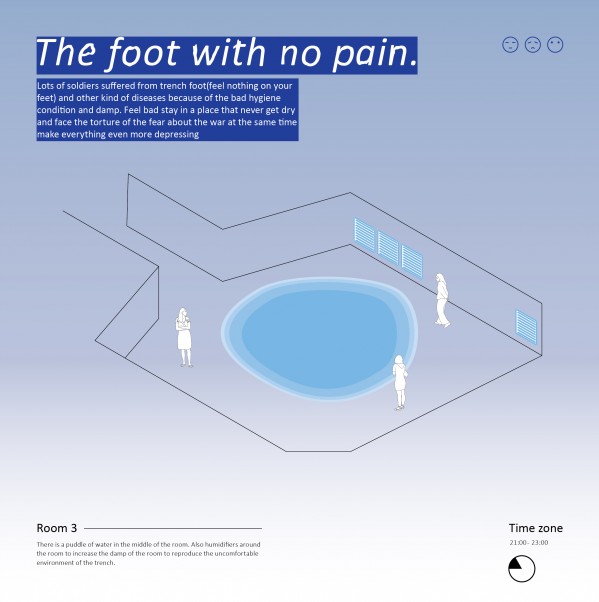
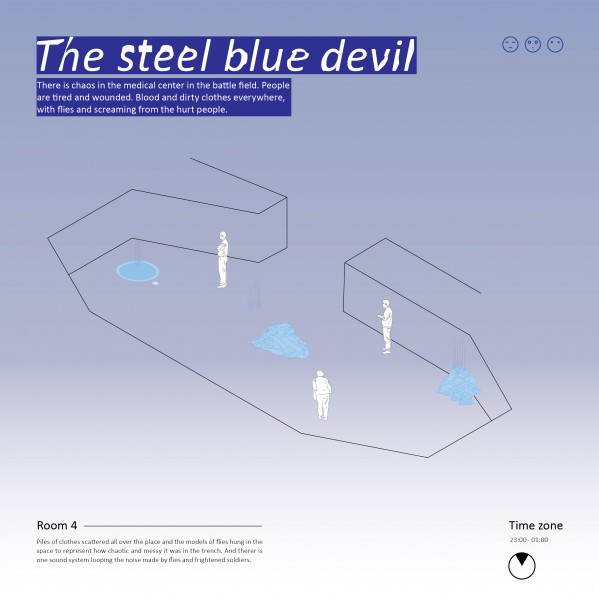
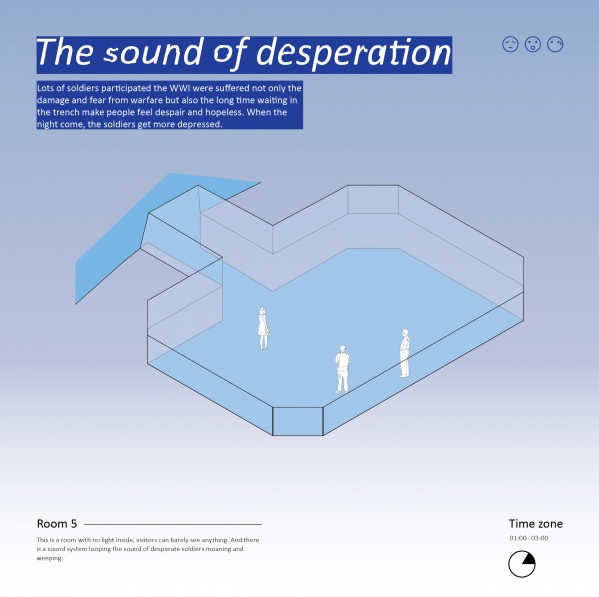
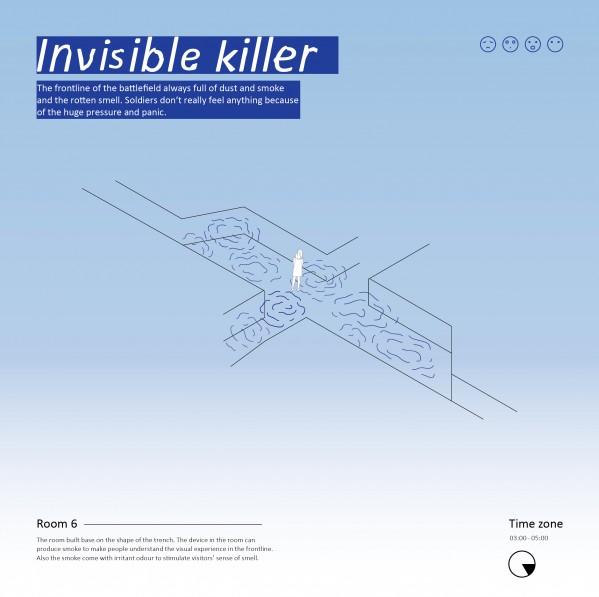
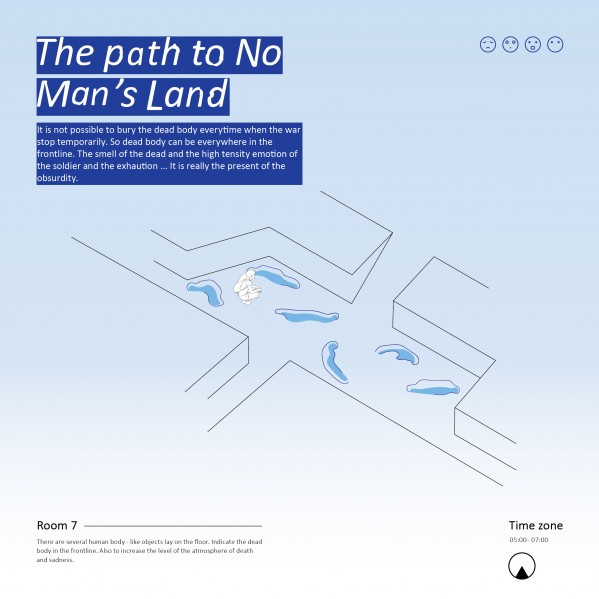
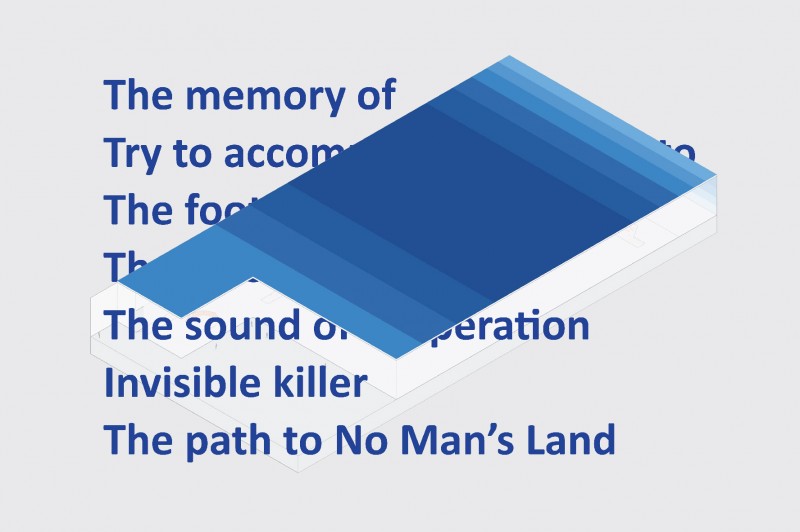
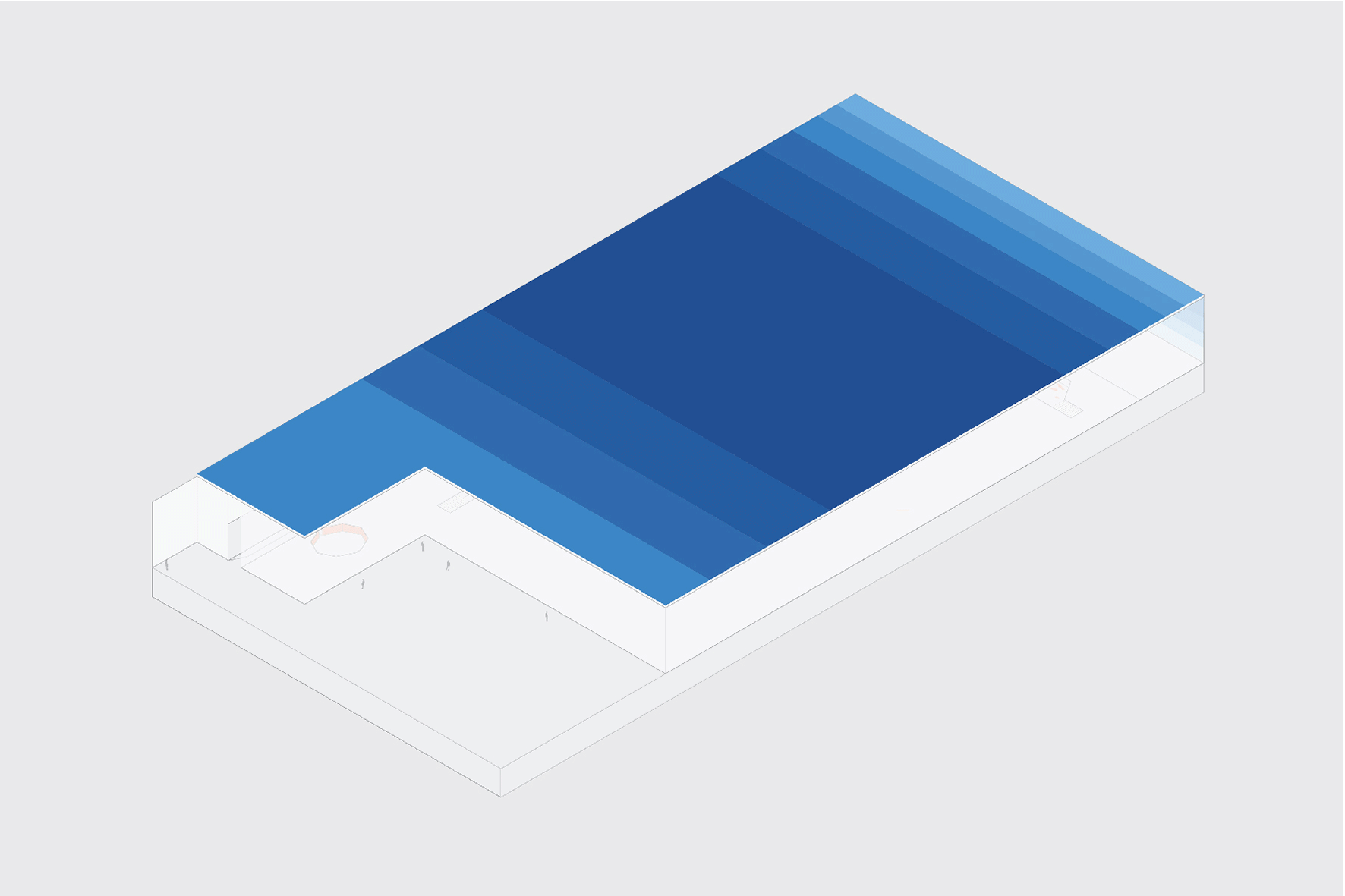
The path to no man's land is a project about the exhibition space to display the reproduction of the trench life during the WWI. But only to show the essential elements of the trench war. The project tends to provide a new way for visitors to experience the exhibition about the war. It's just like reading a three dimensional novel, there are hints visualized for visitors to think and imagine the scene and the meaning behind it. With the minimum amount of the texture being present in the space, the project can be seen as a neutral media to arouse people's curiosity and interest to understand the war and the damage caused by war. The war exhibition full of the vintage gear and texts and pictures is really important and valuable. However people sometimes can not really relate to the content. The reason might be the large amount of the information, or the photos are so surreal compare to modern life(Most of the people live in the first world nowadays have no clue about war, but able to see all the stuff in the museum ironically), or some other reasons. This project is the form of experiment by manipulate the "war" as the topic in spatial and interior aspect and tends to create a neutral environment for having the dialogue with visitors.
This is a spatial design project. There are seven rooms in the space, each one represent a scenario. The content of each room are based on the war journal research and the visual research of the trench war during WWI. Every room has its own light set with different color tone representing the changing of time. So one tour represent a day in the trench. The exhibition basically want visitors to experience a segment of the soldiers' life in the trench.
The project is inspired by the documentary: Nicht löschbares Feuer, directed by Harun Farocki(9 January 1944 – 30 July 2014) who was a filmmaker. There is a man talking in the intro part of the film. He try to explain how people chose to ignore the fact and the context if they see the terrible pictures of the war. So he use the cigarette as the metaphor to make people imagine and understand how much damage can a napalm cause.
_